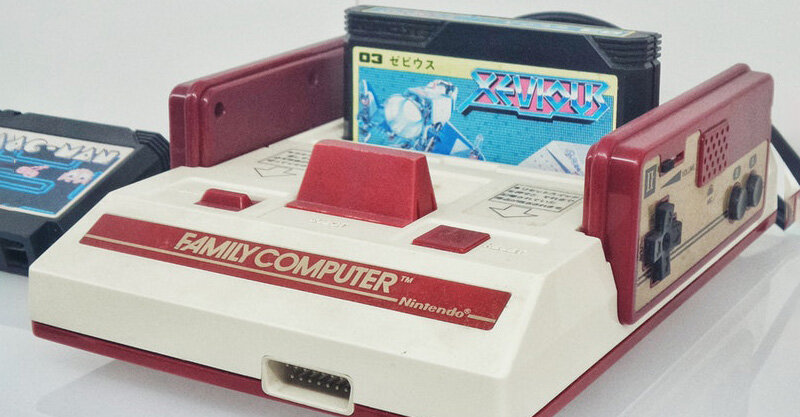Physical Address
304 North Cardinal St.
Dorchester Center, MA 02124


This blog post originally appeared as part of the Pearson Higher Nationals Blog, on their HN Global platform.Those original websites have now been retired. The text provided here does not include images that were included on the website.
In this final part of the Streaming into the future series, we look at the impact of streaming media on the games industry. Part 3 explored streaming media in film and television. While Parts 1 and 2 considered streaming audio; in music and podcasting.
There was a time, believe it or not, when you had use a cassette tape to load a game onto your computer. I can remember connecting a cassette tape player to my Commodore 64 and waiting, and waiting, and waiting… for the game to be loaded to the computer. Today, however, it is increasingly the case that games are not sold on physical media. Buying a console game (for an Xbox or PS4) is likely to be delivered to you on what looks like a credit card and contains a code to allow you to download the game. The rise of computer-game distribution services, like Steam or the Epic Games Store, you don’t even have the card; you simply download the games to your computer and your licensing data is stored (in the cloud) with the service.
However, all of the above are still a download model. You ‘own’ the game or have purchases access to the specific game. Like music, film and television, there have been some major moves to bring streaming media into the mainstream of gaming.
While the console gaming market has been dominated by a very small number of companies (Sony, Microsoft, Nintendo) for quite a long time; having seen off competitors like Sega, Atari and others, it was an unknown company that brought streaming to the games industry.
In 2009, OnLive (a Mountainview, California company, founded in 2003) announced the OnLive Game System. Using a small ‘console’ and a game controller, users would be able to access games that they didn’t ‘own.’ Instead, they would subscribe to access a library of games that they could play over the internet. When announced, there was a great deal of scepticism about whether such a technological feat, relying the the quality of internet connections, was even possible. However, when the service was launched to the public (in 2010) the response (from both journalists and the public) was quite popular. Most found the experience to be close enough to console gaming that they couldn’t tell the difference. The monthly subscription model, to access a library of titles, was already becoming accepted through the rise of Neflix.
In 2012, OnLive announced the OnLive Desktop; a service that would allow users to play games on their computer. For many, this was a revelation. You didn’t need to buy a game to play. You could play PC games on a Mac. And, your monthly subscription was generally cheaper than buying one of the ‘triple-A’ (produced and distributed by the major companies) games. Soon, the service was accessible via mobile phones.
It looked like the future of streaming games had arrived.
The patents that were held by OnLive were estimated, by some, to have been worth hundreds of millions of dollars, but this wasn’t enough to keep the lights on. In late 2012, the company was closed and (although it returned in 2014) in 2015 it’s assets were sold to Sony Entertainment and all services were shutdown.
I guess the future hadn’t quite arrived.
Around the time that OnLive started to have difficulties, Sony Entertainment announced that they would be launching their own game streaming service on the PlayStation platform. PlayStation Now launched in 2014, on PS3 and soon expanded onto the PS4. Unlike OnLive, which was not tied to a specific game company, PlayStation Now provides subscription access to only the games available on PlayStation. Given the size of the PlayStation catalog of games, this is not really a restriction. As of 2019, PlayStation Now provides PS4 owners the opportunity to play over 600 games (from PS2, PS3 and PS4) for about $15 per month.
Sony, with PlayStation Now, is the first of the major console manufacturer to have successfully entered the streaming market, but they are soon to be challenged by Microsoft. Recent press articles have begun to talk about the impending release of Project xCloud and describe it as a ‘Netflix for games.’ The fact that Netflix gets the callback in the press reveals just how ubiquitous Netflix has become in the streaming media space. Project xCloud, at least in some of the press stories, sounds a lot like OnLive; in that it aims to make games available on consoles, computer and mobile devices. According to Microsoft’s Phil Spencer, “It’s really about reaching a customer wherever they are, on the devices that they have.”[1]
Video card and graphics chip manufacturer, Nvidia, are currently testing their gambit in streaming games; GeForce Now. Unlike the subscription-based services, Nvidia’s offering is intended to allow you to play the games that you have bought, on your computer (via services like Steam, Uplay, etc.), on any other device. Their service is aimed at allowing you to have the same game playing experience (high quality graphics, smooth gameplay) on low power devices, by having their cloud-based servers do the heavy work of rendering and calculation.
There is, as yet, limited information about Google’s step into game streaming, but what we know sounds intriguing (although the title, Project Stream, is unlikely to the the actual service name). Through your Google Chrome web browser, you will be able to access play triple-A without a console or any additional software. The service has been in testing since the end of 2018, and those who have been involved in the testing speak very positively of the experience.
Just as music, film & television and podcasting have shifted to a streaming model, it seems highly likely that gaming will follow suit. With Sony, Microsoft and Google already committed (and rumours that Amazon and Apple are moving into games streaming, as well) we may have already crossed the line. Who will be the big winner, or which will be the most popular, is most likely going to be a question of where your current gaming is done. PlayStation owners will probably stay with PlayStation Now. PC gamers are likely to opt for Project xCloud. Those who are a little more ‘platform agnostic’ may go for the Google offering. As with music, film and television, the availability of different services gives users a choice. And, like Spotify or Netflix, the real ‘game-changer’ is the fact that you’ll be able to play hundreds (if not thousands) of games.
Play on!
[1]: https://www.businessinsider.com/microsoft-xbox-netflix-for-games-2019-1?r=US&IR=T#the-goal-to-reach-more-people-who-play-games-1 (https://www.businessinsider.com/microsoft-xbox-netflix-for-games-2019-1?r=US&IR=T#the-goal-to-reach-more-people-who-play-games-1)